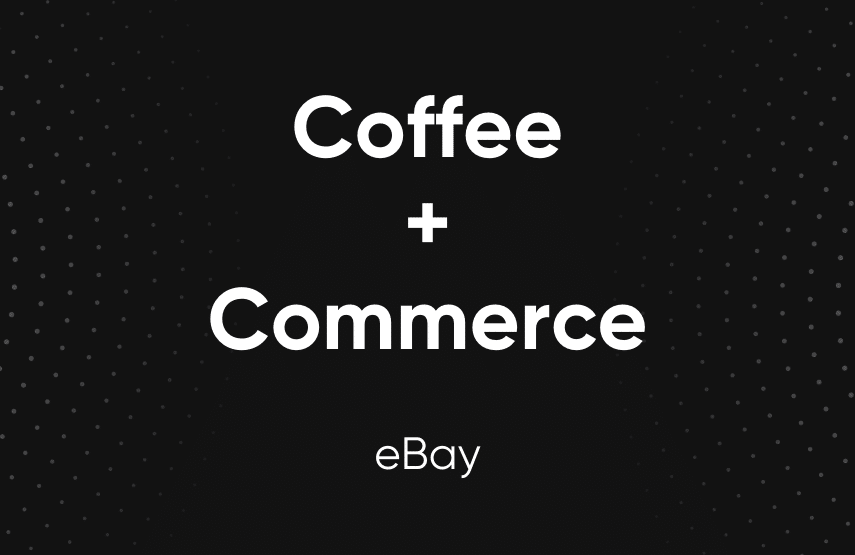Breaking Down eBay’s E-Commerce Site [Video]

eBay is an e-commerce company that connects millions of buyers and sellers in 190 markets around the world. Last year, 54% of eBay businesses grew and eBay is projected to be the third largest e-commerce retailer in 2021.
In this episode of Coffee + Commerce, we break down eBay’s e-commerce site with Prakash Muppirala and Faisal Masud. Prakash was previously the VP of Global Commerce at eBay and Faisal was previously the Director of Global Shipping at eBay.
By directing the points highlighted in this episode, eBay can grow revenue for itself and sellers and better compete with Amazon, Walmart, Best Buy, Target, and other major e-commerce retailers.
[toc-embed headline=”Key Takeaways”]
Key Takeaways
[0:42] Make homepage banners relevant to brand and products.
eBay has promotional banners above the fold on the homepage that don’t relate to the used items that eBay is known for selling. eBay uses stock and OEM images in the banners that are not on brand for eBay.
[1:16] Don’t overwhelm visitors on search results pages.
After typing in a product-related keyword in the search bar, the visitor is presented with a dizzying amount of components. In this specific case, two components are completely unnecessary: 1) the advertisement on the right and 2) the redundant shoe size attribute on the left and at the top.
[2:05] Prioritize and reduce information on the PDP.
At the top of the PDP is a barrage of shipping, delivery, and payment information that is not separated and easy to consume. All information is immediately presented therefore no information is immediately focused on.
[2:40] Iterate and evolve UX and design continuously.
Many of the pages on eBay are reminiscent of early e-commerce experiences from the 1990s. Because eBay is run by groupthink it’s hard to make changes that contribute to modern UX. Further, eBay has always struggled with Buy Now and Add to Cart options. Prakash and Faisal recommend nixing the Add to Cart option.
[3:30] Simplify checkout by removing links.
There are links on eBay’s checkout page that encourage people to abandon checkout. Best practice is to only let visitors leave through the browser back button.
[4:23] Don’t hide coupon codes.
If you are going to hide coupons like eBay does, don’t offer coupons in the first place. A better option here is to automatically discount the list price. Seeing a coupon and not knowing how to use it leads to anxiety and abandonment.
[4:53] Follow UX examples from popular niche sites.
Niches sites like goat.com set a great example for e-commerce UX when it comes to selling used items online. Larger e-commerce players like eBay can dramatically increase conversions and revenue by getting back to the basics of e-commerce site design.
To make changes based on these recommendations and upgrade your e-commerce site, a headless commerce setup is vital. This makes it easy to add new e-commerce functionality and features while maintaining full control over site experience. To learn more about this modern approach to e-commerce, check out Fabric.

Tech advocate and lead editor @ fabric. Previously StackPath, Upkeep, StackShare, MaxCDN.